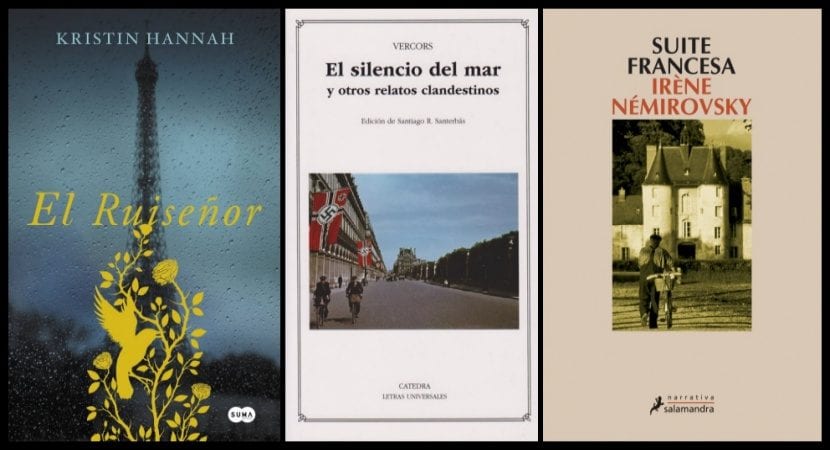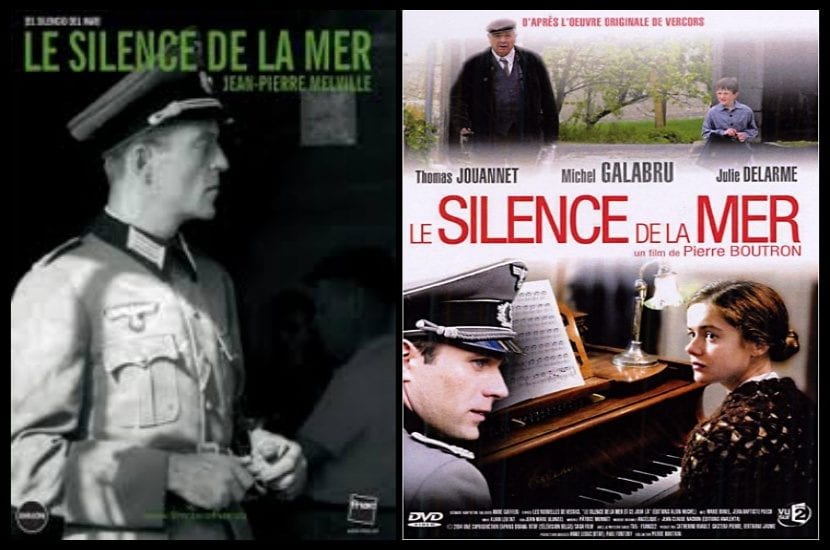
The Nightingale - The silence of the sea - French suite
For fans of the historical novel set in the Second World War, and specifically to the period of the French occupation by the German army, today we remember these three titles: The Nightingale, of the North American Kristin Hannah, one of the most successful and sold novels of today; The silence of the sea, from Vercors; Y French suiteby Irène Némirovsky. The two, French writers who wrote those stories precisely in those very dark days. Némirovsky even had the most tragic ending then.
Possibly the most cinematic readers have seen the film adaptations of the last two, especially the very recent one of French suite. And sure of The Nightingale It doesn't take long to make one because of the potential it has as well. Let's review the common stories they share about the French Resistance struggle, but also about the multiple contradictions in feelings that occurred between invaders and invaded.
The Nightingale - Kristin Hannah
A beautiful tribute to so many anonymous women who fought in the war against the Nazis with the only weapons of their hope, courage, sacrifice and silent but deadly resistance. The story of the Mauriac sisters, with opposite characters but whose strength goes beyond their differences, wants to represent all of them.
In 1939 France Vianne lives in a little town with her husband Antoine and their daughter Sophia. But one day she has to fire her husband, who marches to the front before the start of the war. He doesn't think the Germans will invade France, but they do and soon a German captain shows up to requisition his house. From then on they will have to learn to live with the enemy or risk losing everything. As the years of occupation pass and worsen, Vianne will have to make increasingly difficult decisions in order to continue living.
Moreover, her little sister, Isabelle, is a very rebellious young woman who seeks and finds a cause for her life in the fight against the Germans. Her encounter with Gaëton, a partisan of the Resistance, decides her to work with them from Paris. A) Yes, will help allies fallen on French soil, mainly pilots, to return to their countries. To do this, he will be able to trace an exit route across the border with Spain.
It is written in two tenses: in a first-person narrator's present and in an omniscient narrator's past. Emotional and exciting, it is easy, light and fast-paced prose that manages to move you with interest through the plot.
The silence of the sea - Vercors
It was written in 1941 and published the following year secretly in occupied Paris by the Nazis. It immediately became a symbol of resistance against the Germans. Looks like Vercors was based on a true event because he had taken into his home a German officer with a stiff leg who was playing tennis to recover. They did not establish any relationship, although Vercors realized that the officer admired France because he had numerous French books.
Tell how a An old man and his young niece, also inhabitants of a town, decide to exert that resistance by refusing to speak to the German captain who is staying in their house. He is a military man by tradition and a former music composer, as well as polite, courteous and understanding of the situation. East will try to get closer to them with monologues about the hope of brotherhood and mutual admiration between both countries. But it will not be successful. In the end he is disappointed when he realizes that the ultimate goal of his people is not to build but to destroy and he will end up leaving. However, he will not leave indifferent neither the old man nor especially his niece, who is also suspicious of the activities of the Resistance around and at the same time feels deeply attracted to the captain.
The beauty of some passages is undeniable. Like in this:
Werner Von Ebrennac looked at my niece, her profile pure, obstinate and hermetic, in silence and with great insistence in which, however, the remains of a smile still floated. My niece could tell, I saw her blush slightly, a crease formed between her eyebrows. He continued in his slow dull voice:
-There is a story that I have read, that you have read: La bella y la bestia. Poor beauty ... The beast has her at his mercy, powerless and imprisoned, and imposes on all hours of the day its implacable and overwhelming presence. The beauty is proud, dignified ... she has hardened. But the beast is worth more than it seems. He has a heart and a soul that aspires to rise. If the beauty wanted ...
There are two film versions of this novel, one from 1949 and the other from 2004. For those who want to take a look at them.

Film adaptations
French Suite - Irène Némirovsky
Clearly one of the most famous and recognized titles of this writer of Russian origin and emigrated to France who was Némirovsky. Much more since the successful version that they took to the cinema in 2014. But the stories of both, novel and writer, are also from film, although dramatically real.
French suite es his masterpiece only because chance allowed it. The unfinished manuscript was discovered by chance by his daughters and published in 2004., almost seventy years after Némirovsky, along with her husband, was deported and murdered at Auschwitz in 1942.
With certain autobiographical overtones as it reflects part of the behavior of bourgeois society in those years, fIt was conceived in five parts, but Némirovsky only wrote two: Storm in june y Desserts, where another story of acceptance and resignation unfolds in the face of circumstances. But the alleged indifference of the French to the situation is also highlighted, where there is also an underlying criticism. However, once again we see how, despite these circumstances, it is the most primary or universal feelings that emerge between the characters. Again the most forbidden attraction and desire and the struggle to reject them but at the same time need them.
The 2014 film adaptation was highly acclaimed.
Why read them (or see them)
Because of the surprisingness of its parallelism, its common themes for the different temporal perspectives, from the closest present to the most real past.. Different authors and same descriptions, portraits, reflections. A shared timeless idea: highlight what unites more than what separates. The monsters that are not so monsters and the innocent so innocent. And above all, the universal feelings and that perennial contradiction. Same stories, same senses.
I did not know The Silence of the Sea, let's see if I can get hold of it. Excellent article, thank you very much.